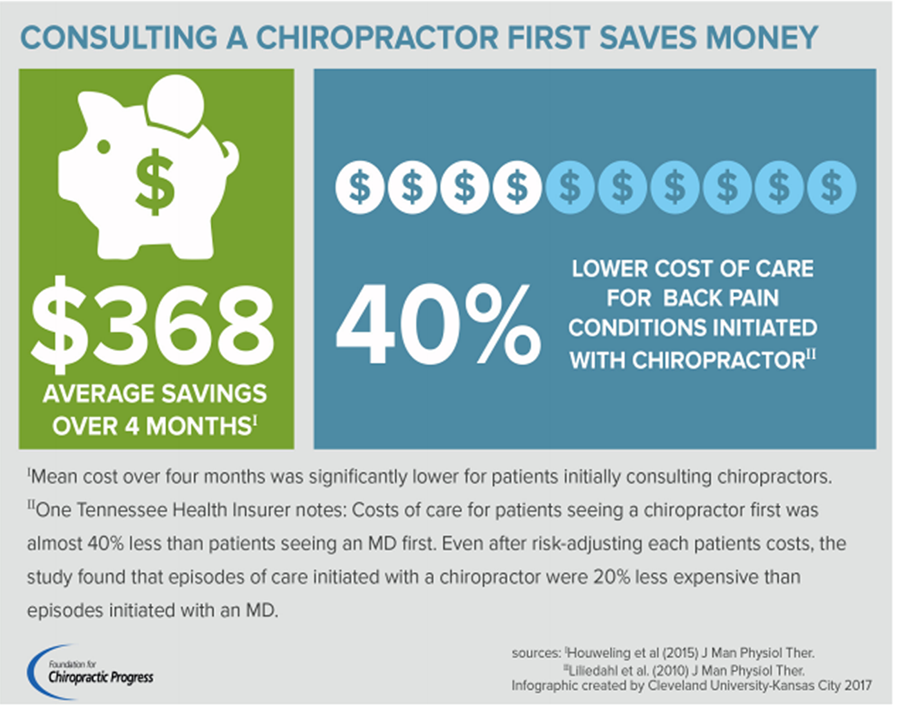

Mechanical Low-Back Pain: A Comparison of Medical
and Chiropractic Management Within
the Victorian WorkCare SchemeThis section is compiled by Frank M. Painter, D.C.
Send all comments or additions to: Frankp@chiro.org




FROM: Chiropractic Journal of Australia 1992 (Jun); 22 (2): 47–53
Ebrall, Phillip
FROM: Houweling, JMPT 2015 Liliedahl, JMPT 2010
This was a retrospective study of all work-related low back pain claimants within a twelve-month period in Victoria, Australia, drawing on the database of the Victoria Accident Compensation Commission and comparing costs of outcomes between chiropractic and medical care. The study found that:
1) there was a significantly lower number of claimants requiring compensation days when chiropractic management was chosen;
2) there were fewer compensation days taken by claimants who received chiropractic management;
3) a greater number of patients progressed to chronic status when medical management was chosen and;
4) there was a greater average payment per claim with medical management ($2308.10) versus chiropractic management ($963.47).The investigator concluded that if the Victorian chiropractors managed up to 40% of low back pain cases (substituting medical care) then
the direct savings within the Victorian WorkCare scheme for the study period would have been $10 million over 7,482 claims.A retrospective study was made of all work-related mechanical low-back (MLBP) claimants within a twelve-month period in Victoria, Australia. Two matched samples were identified where management was solely by either a chiropractor or a medical practitioner.
Comparisons of costs and outcomes were made between the two samples with the results being:(i) a significantly lower number of claimants requiring compensation days when chiropractic management was chosen,
(ii) fewer compensation days taken by claimants who received chiropractic management,
(iii) a greater number of patients progressed to chronic status when medical management was chosen, and
(iv) a greater average payment per claim with medical management.A further result, namely, a higher average practitioner payment with chiropractic management, suggests a more intense level of practitioner/patient interaction by chiropractors. These results demonstrate a significant benefit to the community by chiropractic participation within the Victorian compensation scheme for work-related low-back pain.

Return to COST-EFFECTIVENESS
Since 6-26-2003


| Home Page | Visit Our Sponsors | Become a Sponsor |
Please read our DISCLAIMER |
